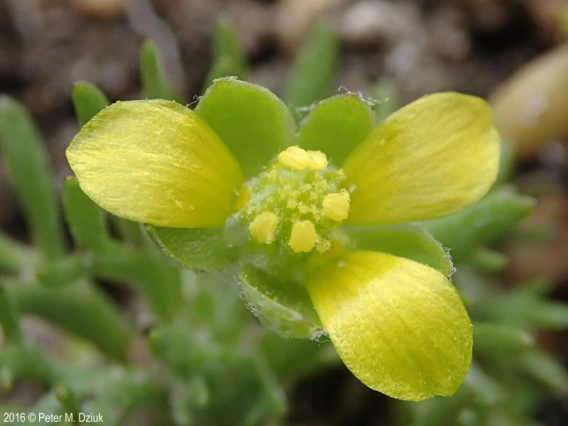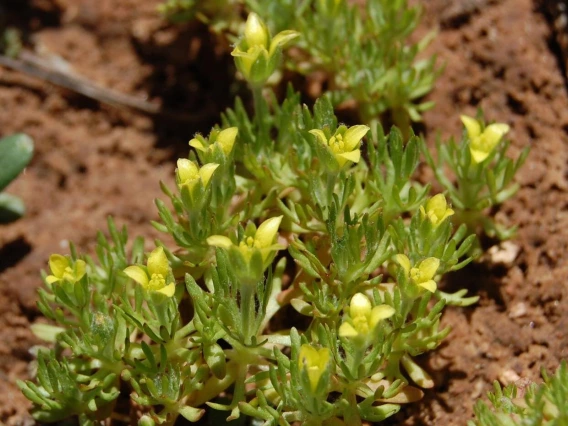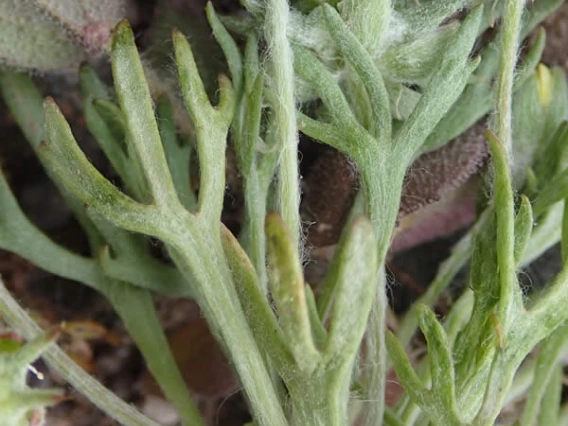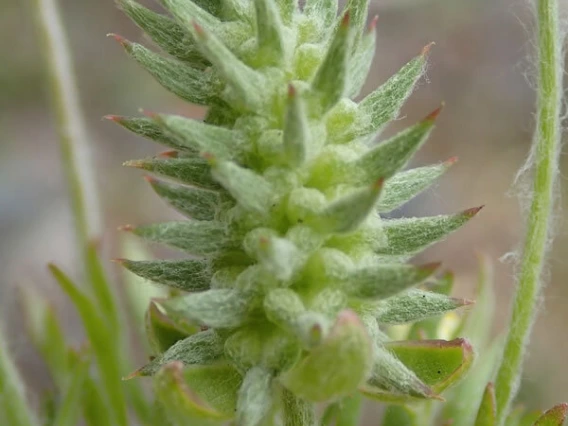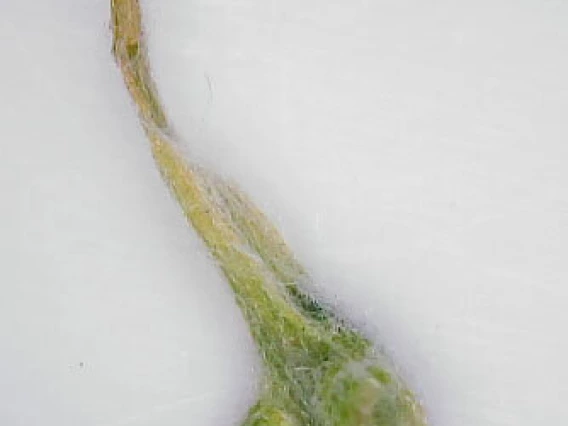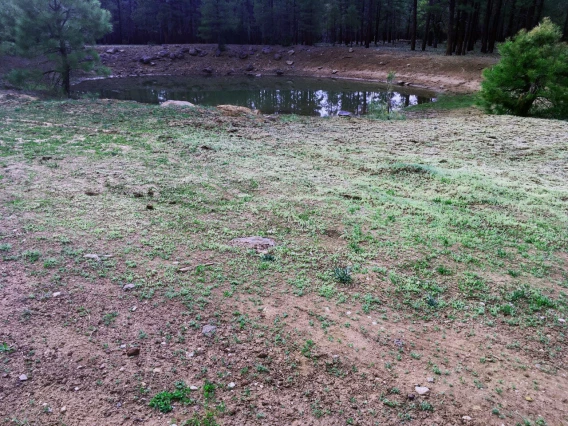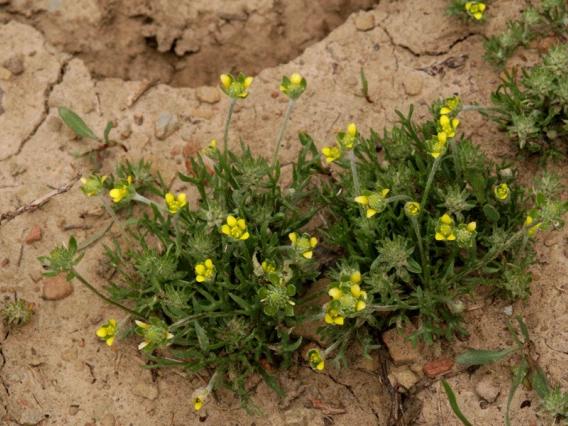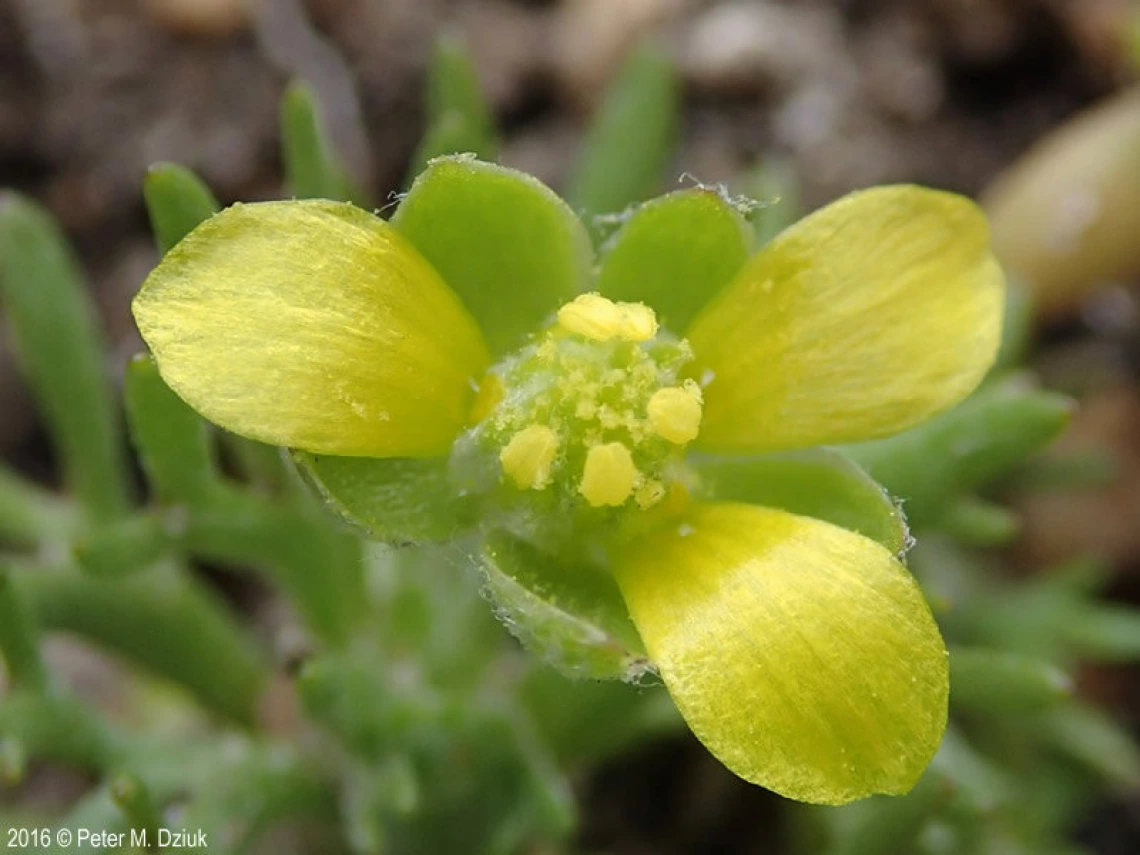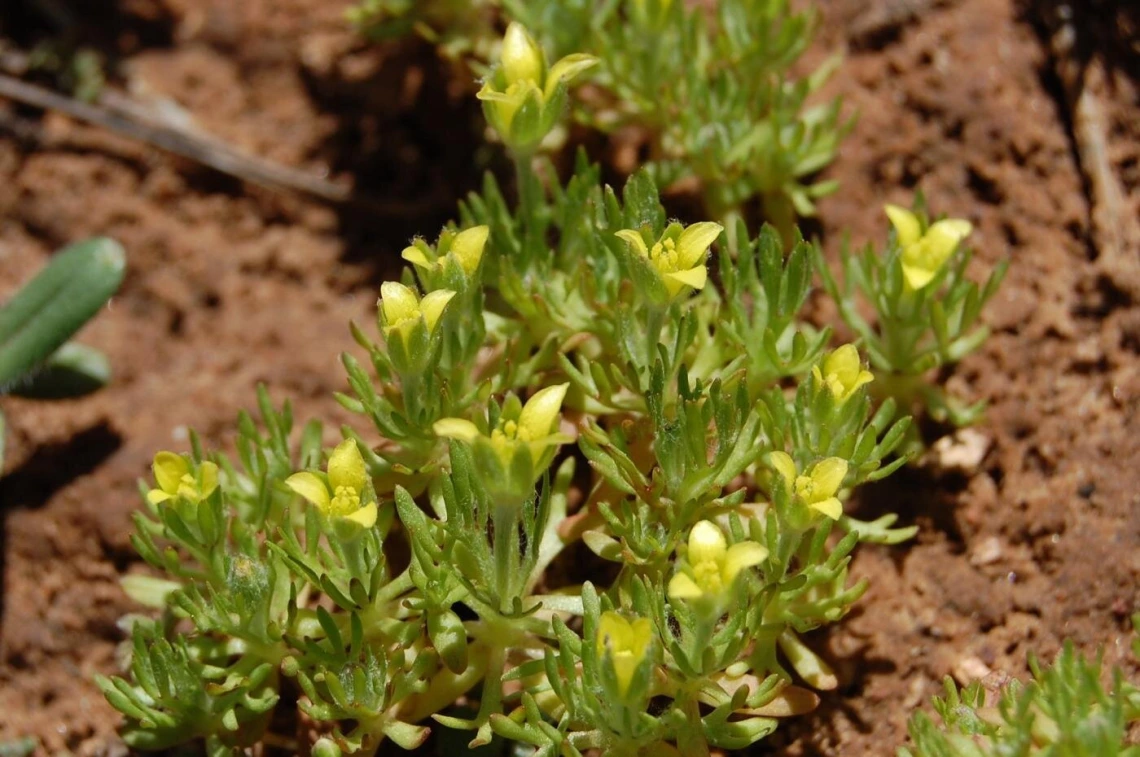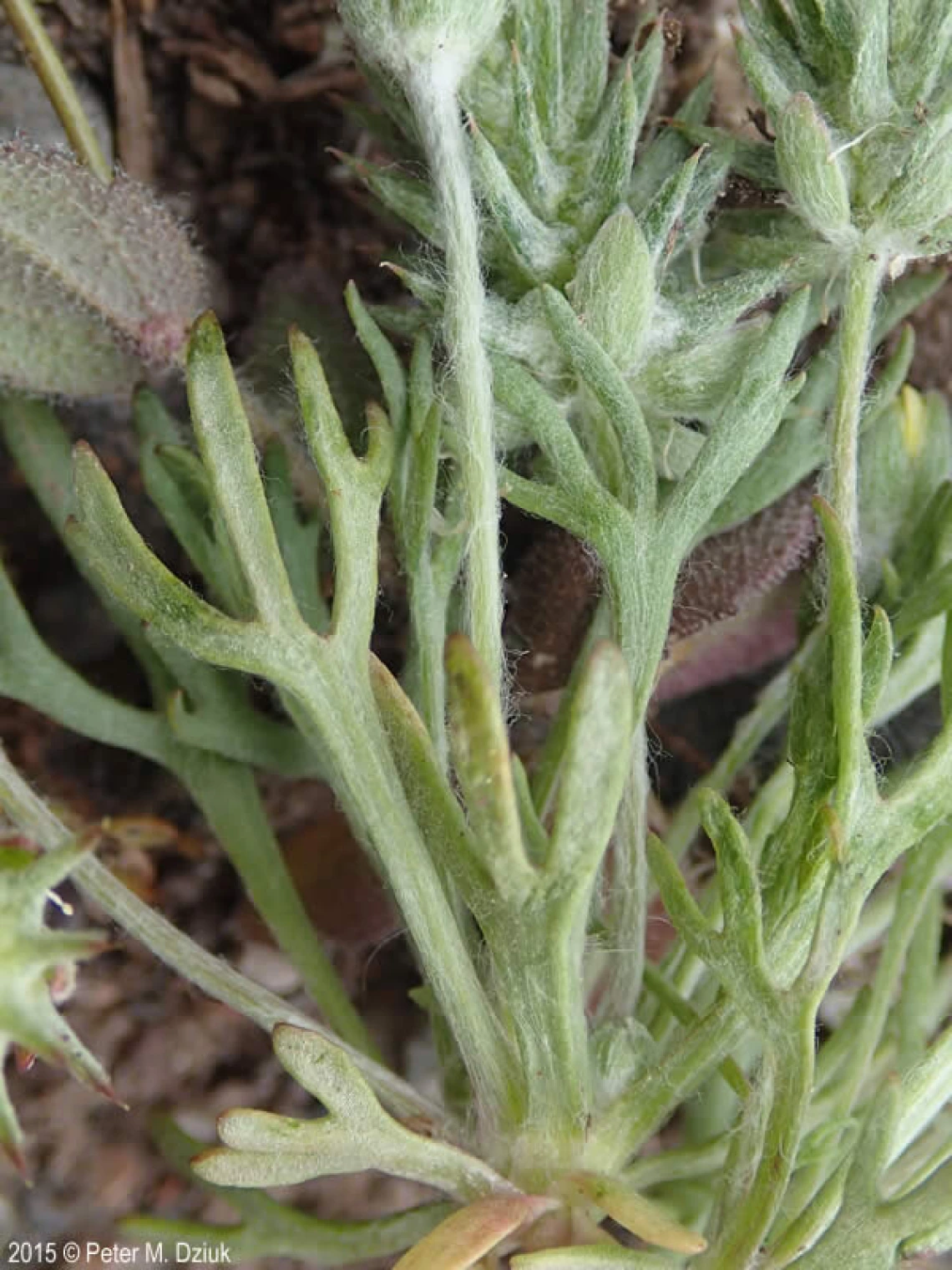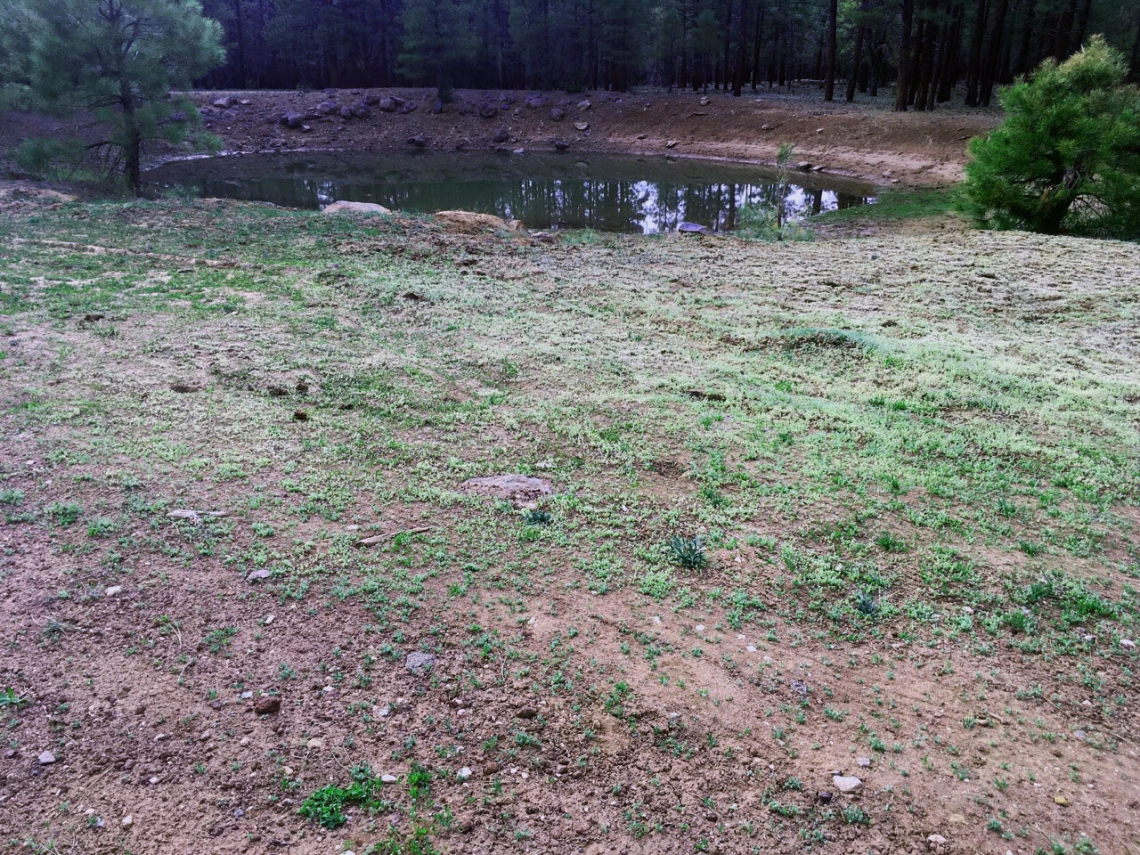Image
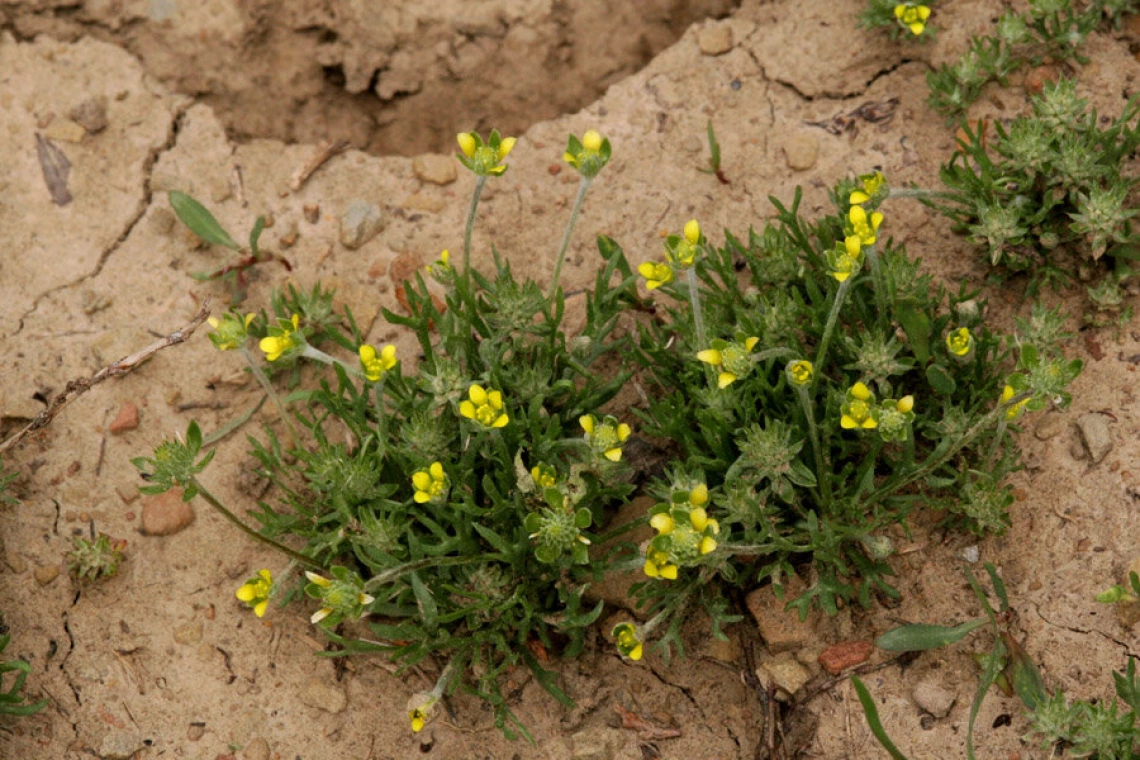
Bur buttercup
Patrick Alexander, swbiodiversity.org/seinet
Common Name(s)
Bur buttercup
Curveseed butterwort
Hornseed buttercup
Scientific Name
Ranunculus testiculatus
Ceratocephala testiculara
Reasons for concern
This plant is extremely aggressive. It spreads rapidly, reducing plant diversity and wildlife habitat. It uses water that would otherwise be available to native species. It can produce two seed crops in one year. When crushed and eaten, it is highly toxic to animals, including horses. If the plants are near a roadside, the seeds can be spread far and wide by the tires of cars and bicycles. When dried out, it poses a serious fire risk to communities and the environment. Its range is spreading rapidly in arid and semiarid areas, including Flagstaff and throughout northern Arizona. Its populations can quickly become so large that eradication is difficult, if not impossible.
Classification
Non-native
Botanical description
Low-growing forb with small, yellow flowers. Plants grow in small patches or in dense carpets
Leaves
Grayish green at the base of stem, 1 to 4 or 5 inches long. Deeply divided into two or three finger-like segments that may resemble a bird’s foot. Leaves have fine, webby hairs.
Stem(s)
Simple, leafless, short, erect
Flowers
Single flower with 5 small, solitary, bright yellow petals at the top of the stem, about ¼” across, blossoming March through May or June
Seeds
Seeds are contained within a bur (the fruit), which is ½ to ¾ inches long. The burs are very prickly to hands and feet. When dry, seeds turn green to brownish gray. It takes only about three weeks for a plant to germinate and go to seed. Seeds are produced twice in a single season. They are dispersed by wind, water, animals, and human activities. Seeds are contained in burs that have two tiny sacks at their base, which is the reason the species is called "testiculata."
Roots
Small, fine, with a fairly shallow root system and a taproot.
Native to
Eurasia
Where it grows
Bur buttercup often grows in colonies or very dense mats that cover large areas of ground. It thrives in dry overgrazed pastures, fields, gardens, roadsides, and waste areas in the western United States at elevations ranging from 4000 to 7500 feet. Infestations along roadways can be found in Coconino, Apache, Maricopa, Mohave, and Yavapai counties.
Lifecycle
Winter or spring annual
Reproduction
By seed
Weedy Characteristics
It takes about three weeks for a plant to germinate and go to seed, and a single plant can produce seeds twice in a season. Plants spread very quickly and develop very dense populations, preventing the germination and development of native seeds. A small population of 9 square feet in one year can grow to 50 square feet in the second year, and to hundreds of square feet in the third year.
Control Strategies
First and foremost, never let the plants flower or go to seed. Pull, hoe, or dig the entire plant out of the ground and bag it to keep flowers and seeds out of the soil. Wear gloves to protect your fingers and hands. Be sure to get the roots and then step down any loose soil. Monitor the site frequently for regrowth. For larger infestations, ask friends to help you, and consider solarizing. Carefully clean all tools and work clothes to prevent seeds from spreading. Monitor—and maybe map--the populations, both during the growing season and from year to year. Planting competitive grasses may help to control Bur buttercup. Contact your local extension office for more information, for help with identification, or to report an infestation on public property or along a roadside.
References
- A Northern Nevada Homeowner’s Guide to Identifying and Managing Bur Buttercup, University of Nevada, Reno, Extension
- Bur buttercup. Weedy flowers of Illinois. Illinois Wildflowers
- Ranunculus testiculatus (Bur Buttercup), Minnesota Wildflowers

